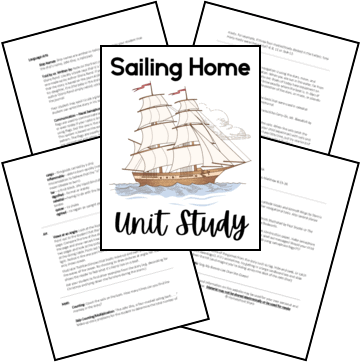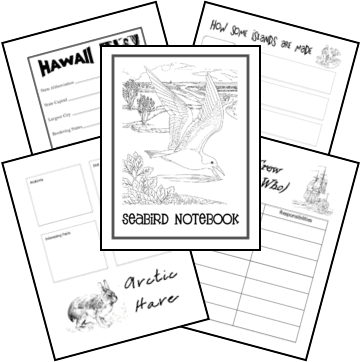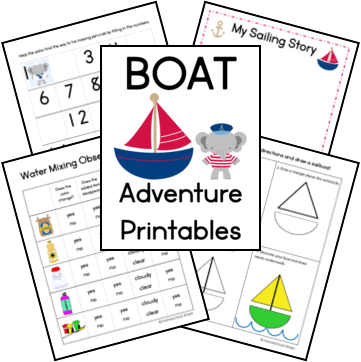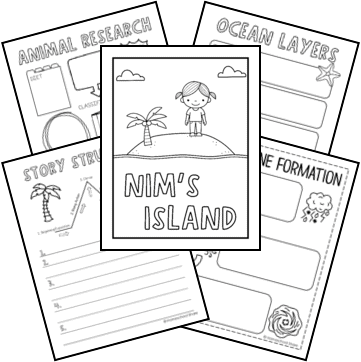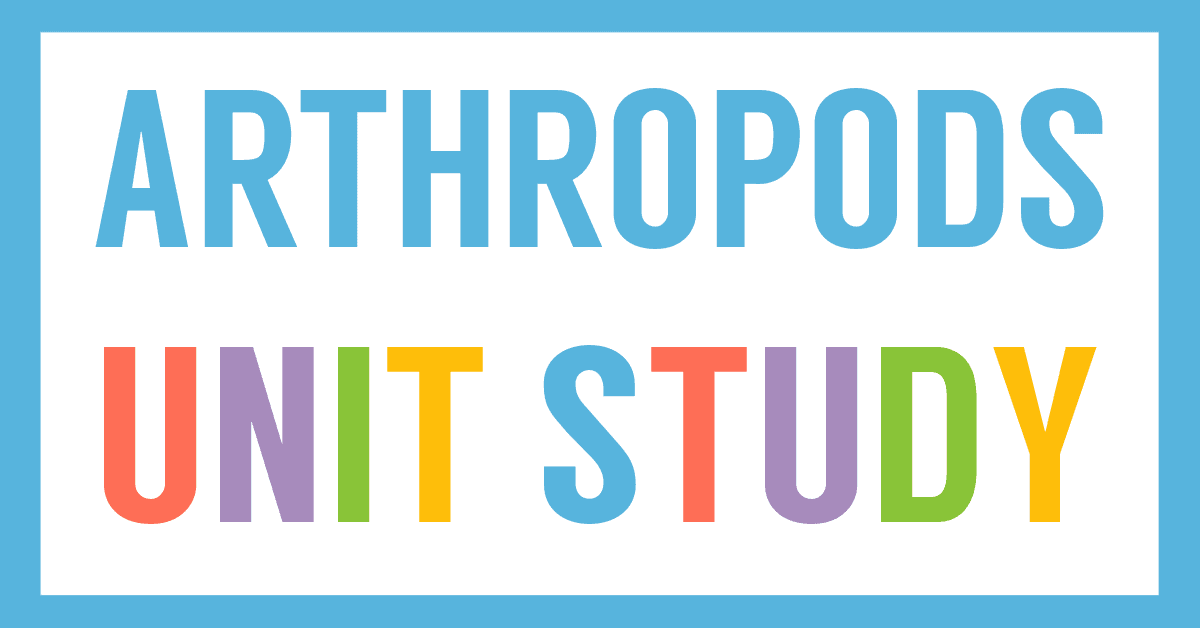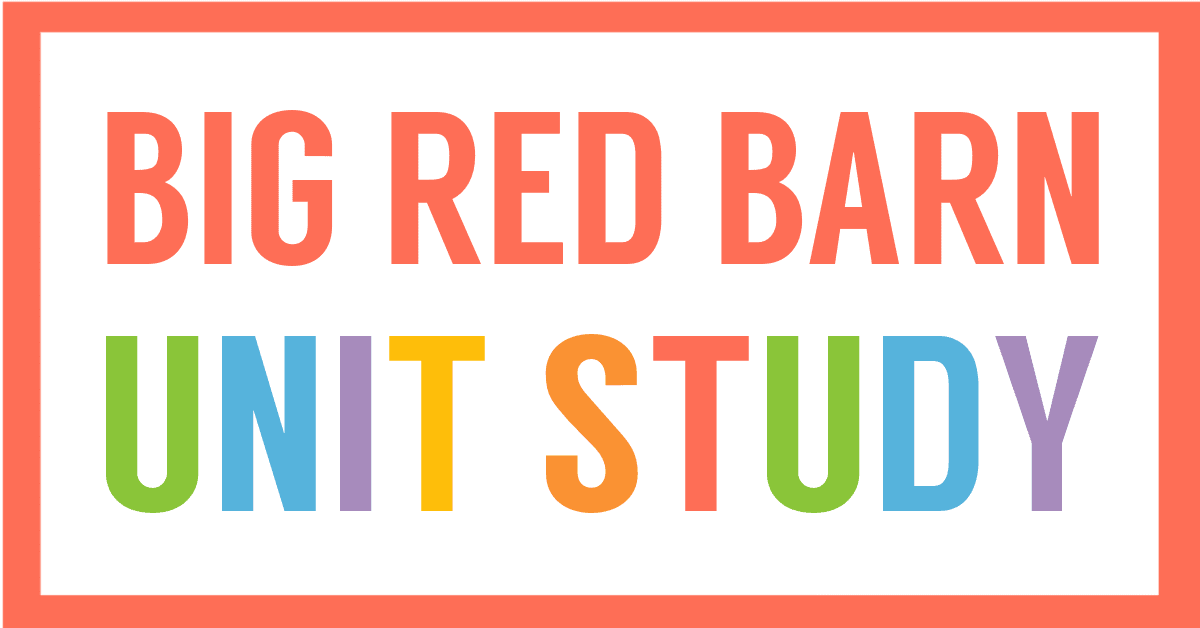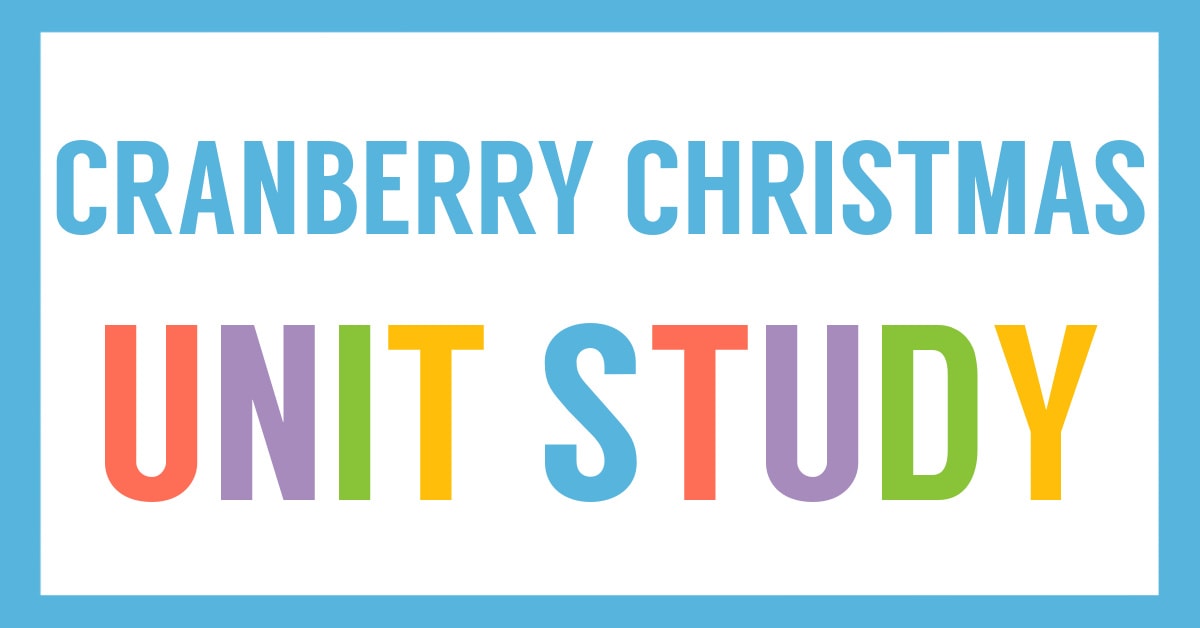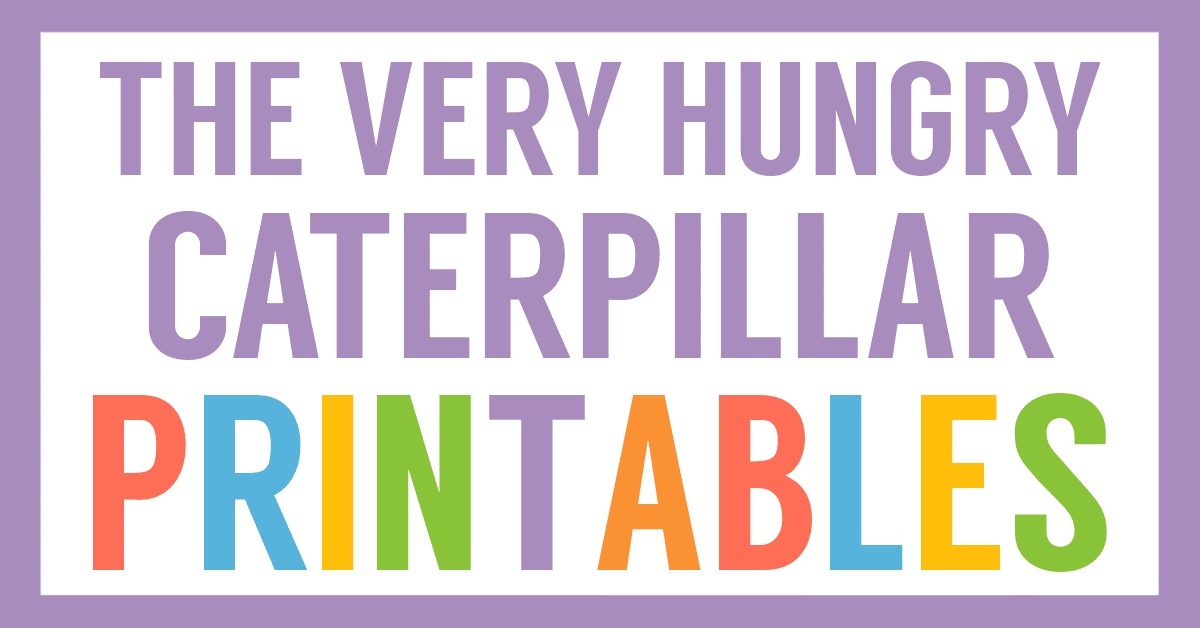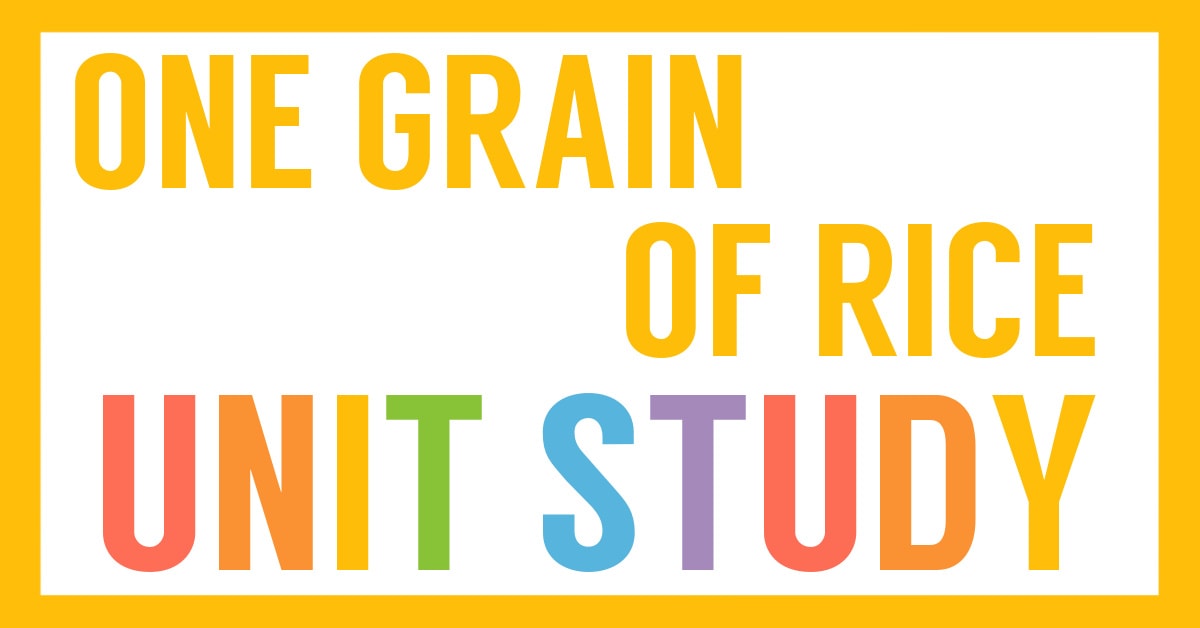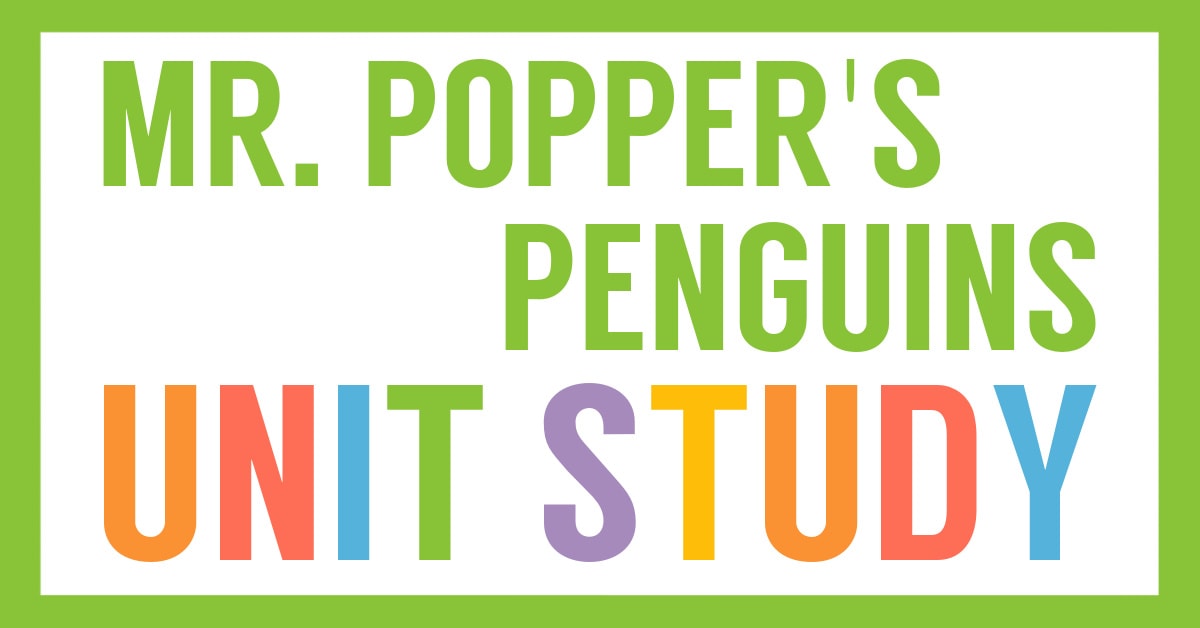Affiliate Disclaimer
We sometimes use affiliate links in our content. This won’t cost you anything, but it helps us to keep the site running. Thanks for your support.
This unit study includes lessons and activities based on the book Sailing Home by Gloria and Ted Rand..
Games of tag on the deck; swings tied to the masts; a floating farmyard filled with chickens and ducks and even a pig; exotic pets, including a mongoose, a monkey, a kangaroo; studying astronomy and celestial navigation under the stars and geography with firsthand visits all over the world. This was the childhood of the four Madsen children who made their home aboard a four-masted sailing bark that carried cargo in the 1800s.
from Sailing Home: A Story of a Childhood at Sea summary at amazon.com
This wonderful story provides the base for lessons on navigation, oceans, pets, ship names, signal flags, and so much more! Grab our Sailing Home unit study to get started with this great book.
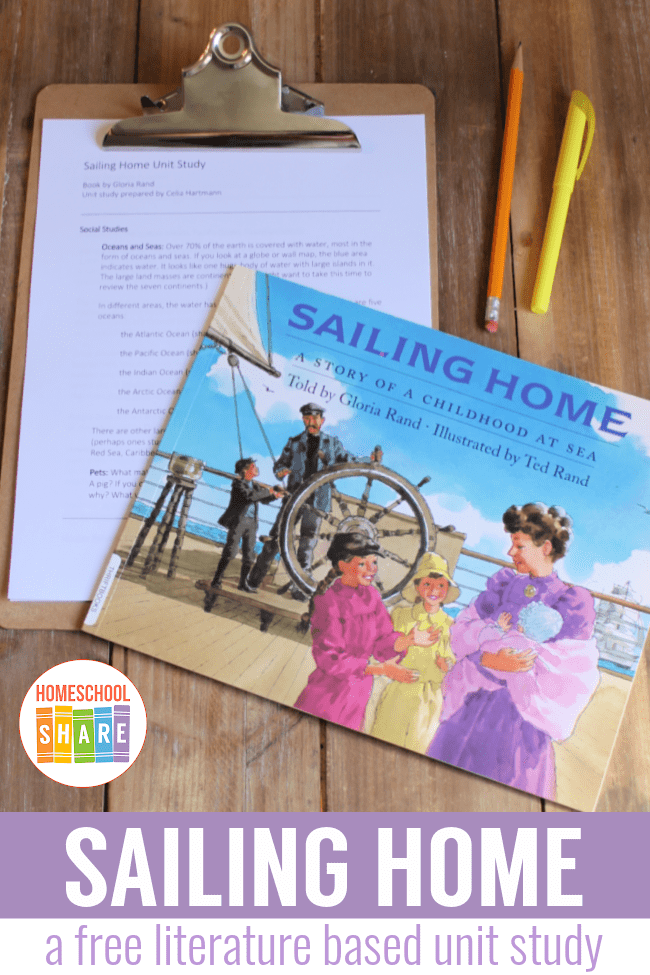
Thanks to Celia Hartmann for preparing this Sailing Home: A Story of a Childhood at Sea unit study.
Sailing Home Unit Study Lessons
Here is a sample of the lessons found in this Sailing Home unit study:
Geography: Oceans and Seas
Over 70% of the earth is covered with water, most in the form of oceans and seas. If you look at a globe or wall map, the blue area indicates water. It looks like one huge body of water with large islands in it. The large land masses are continents. (You might want to take this time to review the seven continents.)
In different areas, the water has different names. For example, there are five oceans:
- the Atlantic Ocean (shaped like an “S),
- the Pacific Ocean (shaped like an “O”),
- the Indian Ocean (shaped like an upside-down “V”),
- the Arctic Ocean (shaped liked an “O”), and
- the Antarctic Ocean (shaped liked an “O”).
There are other large bodies of water are called Seas. Point out some of seas (perhaps ones studied prior to this lesson): Mediterranean Sea, Aegean Sea, Red Sea, Caribbean Sea, South China Sea, etc.
Art: Views at an Angle
Look at the illustration showing the family gathering eggs. Point out to the student that the hen cages look crooked. Now, turn the page. Compare the line of the ships railing with the line of the horizon.
Turn the page and show remark how the mother reading looks sideways. Turn two pages and look at the picture of the Miss Shipman teaching the children at the dining table. Point out to your student the swing of the overhead light. Notice in the one port hole you can see part of the sky, but the other only shows ocean.
Illustrator Ted Rand knows that boats move up and own and to and fro with the waves of the ocean. By choosing to draw pictures at angle, Mr. Rand allows the reader to feel what it’s like to live on a boat.
Ask your student to find other examples from the story (e.g. decorating for Christmas and tying down the furniture during the storm.)
To access all of the lessons in this Sailing Home unit study, grab an easy-to-print file at the end of this post.
How to Get Started with the Sailing Home Unit Study
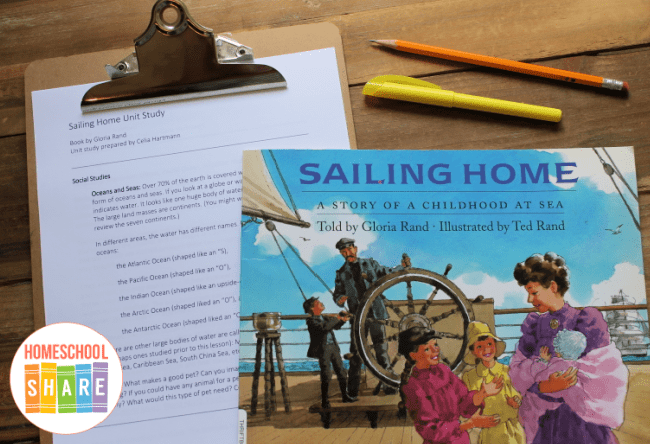
Follow these simple instructions to get started with the Sailing Home unit study:
- Buy a copy of the book, Sailing Home, or grab one from your local library.
- Print the Sailing Home unit study.
- Choose the lessons you want to use with your student (a highlighter works great for this).
- Enjoy a week of book-based learning with your student.
Download Your Sailing Home Unit Study
Simply click on the image below to grab the free Sailing Home unit study.
More Sailing the Ocean Resources
Is your student fascinated with boats? Would you like to extend your study? Try these resources:
This Seabird Notebook is based on the book by Holling C. Holling.
A younger student might enjoy these Boat Adventure Printables.
An older student may like reading Nim’s Island and completing the lessons found in this unit study.

